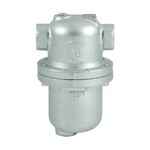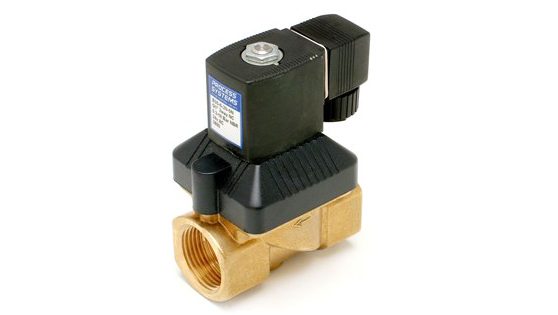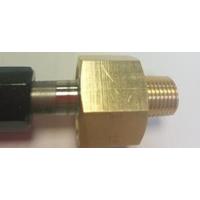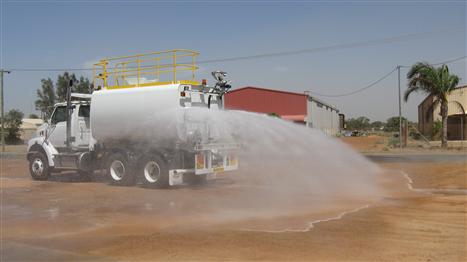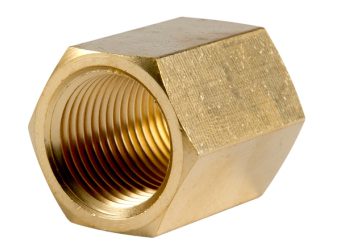A Complete Guide to Understand Industrial Butterfly Valves
28 January 2025
Butterfly valves are essential in nearly all industrial applications due to their effectiveness in isolating system flow. Thanks to their small size, adaptability, and affordability, they are the go-to option in every industry. Choosing the correct butterfly valve for your system can be challenging due to the wide range of alternatives available, including material, size, actuation and construction design.
This article will help you learn about the many varieties of butterfly valves, their technical specs, and the most important things to know about their maintenance. Wafer, lugged, double-flanged, zero-offset, double-offset, and triple-offset butterfly valves are among the many varieties covered. The actuation and material-based classification of butterfly valves will also be covered. Using this information, you can select the best value for your setup.
What is a Butterfly Valve?
A butterfly valve is a quarter-turn valve that isolates the flow of liquids, gases, or slurries via a pipe. It rotates a disc (the closure element) around a central axis perpendicular to the flow direction. When the disc is parallel to the flow, the valve opens; when it is perpendicular, it closes.
Basic Working Principle
No matter which type of butterfly valve you are going to install, the basic working principle is the same. The operation of a butterfly valve relies on the precise rotation of its disc to control fluid flow. Don’t worry; you will learn about what a disc is and other components in the following section.
The valve opens when the disc is parallel to the flow. This way it allows maximum flow through the piping or system. On the other hand, when the disc is rotated to a perpendicular orientation, such as shown in the figure below, the valve enters the closing position. Once it is closed, it will block any passage through the system. Additionally, adjusting the disc to intermediate angles allows the valve to regulate the flow rate to some degree. This provides versatile control of anything flowing through to meet varying operational requirements.
.png)
Components of a Butterfly Valve
Now, let us guide you about the main components of any butterfly valve. It comprises five core components working together to isolate flow effectively. As you can see in the image, the disc is at its core. This disc was mentioned above in the rotated working principle to regulate fluid passage. Then comes the seat. A seat is like a sealant that provides a sealing surface for the disc to sit or rest in a closing position. It is necessary for a tight closure of the passage. Like any component, both parts need a housing called the body. It also connects the valve to the pipeline. Then comes the stem, as you see. It is seen as a tiny rod connected to the disc. It serves as the linkage between the disc and the actuator.
The actuator can be a manual lever, pneumatic, or electrical. Then comes the stem, which is an essential part of the valve that transmits the rotational motion from the actuator to open and close the valve and adjust its position. The actuator is the mechanism that rotates the stem and disc to adjust the flow as required.
Types of Butterfly Valves
The butterfly valves come in various configurations, materials, actuation types, and construction designs. It is essential to learn about each to understand which one will be suitable for your applications. Process Systems has stock of butterfly valves that meet all your industrial needs. Each valve is quality-checked and designed to suit your specific applications and pressure/temperature-based performance requirements. The types of butterfly valves are classified based on various factors, such as shown in the image below.
.png)
The good point is that we have all the types of valves to serve your application needs. Let us now discuss the most important ones so that you can understand them in more detail.
Wafer Butterfly Valve
If you’re looking for a compact, lightweight valve that easily fits into tight spaces, a Wafer Butterfly Valve could be an excellent choice for your system.
.png)
With a thin body design, you can sandwich it between two flanges using bolts. Moreover, it relies on a single rubber or elastomeric seat for sealing. With these features, it is suitable for medium pressures generally up to 16 Bar. This feature makes it highly effective in HVAC systems, water distribution, and other low-pressure industrial processes.
.png)
This butterfly valve is engineered with a ductile iron body (1), coated with a fusion-bonded epoxy, for robust structural strength and superior corrosion resistance. The disc (4) is constructed with CF8M to ensure durability and reliable sealing, while the shaft (3) is manufactured with SS431. SS431 delivers high-strength torque transmission. The EPDM seat (2) provides dependable sealing against fluids, while the PTFE bushing (5) reduces friction for smooth operation. An NBR O-ring (6) enhances leak resistance, and the handle (7), manufactured with ductile iron, offers reliable control. Additional components include a circlip (8) made from SS316 for secure assembly, an SS304 card (9) added for more structural integrity, and A2 – 70 bolts and nuts (10) for corrosion-resistant fastening. These high-quality materials ensure the valve’s long-lasting, efficient performance in demanding applications.
Along with this High-Pressure Wafer Ductile Iron Butterfly Valve, we also have a stock of UPVC Double-Acting Pneumatic Wafer Butterfly Valves and UPVC Spring-Return Pneumatic Wafer Butterfly Valves.
One key benefit is its ease of installation and removal. Its slim profile also keeps costs down. However, its sealing capabilities are somewhat limited so that it wouldn’t be suitable for high-pressure or high-temperature scenarios.
Lugged Butterfly Valve
Lugged butterfly valves feature threaded inserts commonly called “lugs.” These lugs allow you to bolt them directly to multiple flanges. This design lets you remove or maintain one side of your pipeline without disturbing the other. You can choose to offer partial isolation when you need it most.
.png)
At Process Systems, lugged valves are available in sizes ranging from 50mm to 600mm. All sizes have an FBE-coated ductile iron body that delivers durability and corrosion resistance. An EPDM seat provides reliable sealing performance. We have built it with 316 stainless steel discs so that it can work best under challenging conditions.
.png)
Technical Specifications
This valve is built around a ductile iron body (FBE coated) in accordance with AS1831500-7 and ASTM A536. These standards assure structural integrity and corrosion resistance. The EPDM seat (70 IRHD) ensures a reliable seal, while the stainless-steel shaft (SS431, per ASTM A370) and disc (CF8M, also per ASTM A370) deliver strength and durability. A polymer PTFE bushing reduces friction, complemented by an NBR O-ring (70 IRHD) to enhance leak-tight performance.
.png) |
.png) |
One of the standout advantages you’ll notice is the valve’s ability to isolate a section of your pipeline for maintenance without disrupting the entire system. This feature makes these valves appropriate if your operation demands frequent inspections or part replacements.
These valves will do the same pressure as their wafer cousins but allow outfall applications (where the valve will be bolted). Lugged butterfly valves tend to be heavier and bulkier than wafer types, which can increase the associated cost a little. If you’re on a tight budget or weight is a critical factor, you’ll want to balance these considerations. Now, let’s learn about the common applications of lugged valves.
Common Applications
Lugged butterfly valves are preferable in industrial pipelines requiring routine or segment-by-segment maintenance. At Process Systems, we have a Lugged Ductile Iron Butterfly Valve, Lugged Ductile Iron Spring Return Butterfly Valve, and Lugged Ductile Iron Double Acting Butterfly Valve, with a 316 S.S disc and an EPDM seat. This make these valves suitable to a wide range of general water applications.
These can be actuated by either a lockable lever and notch plate or gearbox. The unique bonded cartridge design gives them a longer life span. It allows the vacuum to be run through them and makes them replaceable if the need arises. Common applications of these valves include water trucks, irrigation systems, cement hoppers, and other industrial applications.
Moreover, these valves are certified by Watermark, Standards Mark, and WSAA (Water Service Association of Australia). If you need a size above 600mm, you will need to use double-flanged valves. You'll appreciate these valves' convenience if you frequently need to shut down just one part of your system to perform repairs or upgrades.
Double Flanged Butterfly Valve
Double-flanged butterfly valves are engineered with flanges on the inlet and outlet ends. This characteristic provides a leakproof sealing to the pipelines. Moreover, these extended mounting surfaces allow for straightforward installation and facilitate higher pressure ratings up to ANSI 300–1000. This is the reason they are used reliably for demanding flow control applications.
We have designed the double-flanged valves to suit AS4087 PN16. Depending on the size, you can use them for various pressure considerations. The size variations can range from 50 mm to 1200 mm, offering flexibility across various industrial processes.
.png) |
.png) |
The valve body is made of ductile iron (AS18311500-7, ASTM A536) and coated with Fusion Bonded Epoxy (FBE), which provides exceptional corrosion resistance and durability. The EPDM seat (Watermark approved) ensures a tight seal against fluid leakage. Along with that, the CF8M stainless steel disc (ASTM A370) delivers high performance in corrosive or high-pressure environments. To improve operational integrity, the valve has upper and lower shafts made of SS431 stainless steel (ASTM A370), as well as a stainless-steel pin (SS316, ASTM A370) for added strength. However, to avoid potential failure points, polymers are employed in the bushing to minimize friction, and an NBR O-ring adds sealing reinforcement.
.png) |
.png) |
When it comes to actuation, these valves can be fitted with either a lockable lever and notch plate or an IP67-rated gearbox featuring a stainless-steel shaft and a clear visual indicator. These options allow operators to select the most suitable control mechanism for their application requirements. Moreover, we have Double Flanged Electric Butterfly Valve, Double Flanged Spring Return Butterfly Valve (Flanged AS4087 PN16) and Double Flanged Double Acting Butterfly Valve (Flanged AS4087 PN16).
In high-pressure applications, sealing the seals is a significant challenge to overcome. So, the design of these valves, based on precision engineering principles, delivers superior sealing capabilities and reduces leakage risks. However, the additional materials and dual flanges make double-flanged butterfly valves heavier and costlier than single-flanged or wafer-style valves. Despite the higher upfront investment, they excel in applications where reliability, partial or full isolation, and longevity are paramount.
| Comparison of Different Types of Butterfly Valves | |||||
|---|---|---|---|---|---|
|
Feature |
Wafer |
Lugged |
Double Flanged |
Double Offset |
Triple Offset |
|
Construction |
Thin body, single flange |
Reinforced body, multiple lugs |
Two flanges, robust body |
Dual-offset mechanism |
Triple-offset mechanism |
|
Installation |
Between two flanges |
Bolted via lugs |
Bolted between flanges |
Flanged or lugged mounting |
Flanged mounting |
|
Sealing |
Single elastomeric seat |
Single/double seats |
Double seats |
Metal-to-metal, dual seats (RTFE) |
Advanced metal-to-metal seals (Stellite) |
|
Pressure Rating |
Vacuum to 16 Bar |
Vacuum to 16 Bar |
0 to 16 Bar |
Up to 20 Bar |
Up to 20 Bar |
|
Temperature Range |
-20 to 130°C |
-20°C to 90°C |
-20°C to 90°C |
-29°C to 180°C |
0°C to 400°C |
|
Applications |
HVAC, water systems |
Industrial pipelines |
High-pressure systems |
High-pressure, throttling |
Extreme conditions, zero leakage |
|
Advantages |
Lightweight, compact |
Flexible installation |
Superior sealing |
Reduced wear, reliable sealing |
Zero leakage, extreme durability |
|
Disadvantages |
Limited sealing |
Heavier, costlier |
Bulkier, more expensive |
More complex than standard types |
More expensive, complex |
The construction and versatile design of double-flanged valves minimize downtime by ensuring dependable operation, even under challenging conditions. Whether you need to manage aggressive fluids, high-pressure flows, or critical shutoff scenarios, these valves offer a durable and customizable solution for long-term performance.
Now, you will learn about the classification of butterfly valves based on the position of the disc in relation to the centre. This is usually called offset, and it comes in three different offset positions: zero offset, double offset and triple offset.
Zero-offset Butterfly Valve (Center Line Butterfly Valves)
These are the butterfly valves commonly used in industrial applications. The disc and stem of zero-offset butterfly valves are positioned at the center of the valve seat, which is aligned with the center of the valve body. The disc rotates around a central axis, enabling a full 360° rotation. Sealing is achieved as the disc compresses the soft seat, generating friction throughout the operating cycle.
These valves are widely used in liquid and gas systems with pressures up to 16 Bar and temperatures reaching 90°C (higher with other seat materials). They are well-suited for applications involving food products, coatings, chemicals, abrasives, and solid materials. One significant advantage of zero-offset valves is that the flowing medium does not come into contact with the valve body, as the valve seat provides complete coverage and protection.
Double Offset Butterfly Valve
The double-offset butterfly valve, often called a high-performance butterfly valve, features two key offsets relative to the valve body’s center. The first one is the shaft axis, which is offset from the centerline of the disc’s seat and the body seal. The other one is in which the shaft axis is eccentric to the centerline of the valve and pipeline.
.png)
This design positions the disc so that it creates a cam-like action during operation. As the valve opens or closes, the seat lifts off the seal, minimizing friction except during the initial 10° and final 10° of the opening and closing cycles.
Double-offset butterfly valves are ideal for applications requiring higher pressure handling than zero-offset butterfly valves can accommodate. Their design and durability make them suitable for more demanding operational conditions.
Triple Offset Butterfly Valve
The triple-offset butterfly valve incorporates three offsets, like those in a double-offset butterfly valve. The third offset, however, is in the geometry of the valve’s seating surface rather than the shaft position.
In this design, the sealing components are precision-machined to form a conical profile on the valve seat and disc. This ensures that the disc only contacts the seat during the first and last 1° of the opening and closing cycles, significantly reducing wear and friction.
.png)
Triple-offset butterfly valves are suitable for applications similar to double-offset valves but excel in tighter and more demanding environments. Their precise design makes them ideal for high-pressure, high-temperature, and critical sealing applications.
Classification Based on Materials Used in Butterfly Valves
Butterfly valves, available on the market, are made of different materials, including stainless steel, ductile iron, Carbon Steel, and UV-stabilised PVC. The material selection of different components of these valves also varies to make them suitable for different industrial applications.
.png) |
.png) |
.png) |
Stainless steel is commonly used for the body because it is corrosion-resistant, making it ideal for aggressive media. Ductile iron is another material for the body, offering a cost-effective solution for water and gas applications. Moreover, a plastic polymer body is also available for lighter applications. Carbon steel, which is known for its high strength, is typically employed in high-pressure environments.
The disc can be made from stainless steel for its corrosion resistance, PVC/CPVC for non-aggressive fluid handling, or composite materials for lightweight and corrosion-resistant performance.
The seat materials vary based on the application, with rubber or elastomers offering flexible sealing in low-pressure settings, PTFE and EPDM (Teflon) providing excellent chemical resistance and high-temperature tolerance, and graphite being used for applications requiring high-temperature endurance.
All the mechanical equipment, wear, tear, and maintenance for issues also occur in butterfly valves. Understanding and troubleshooting the issue is half solved. Conversely, solving an issue that doesn’t exist only adds to the costs. We have listed some common issues in the table below that can serve as reference points for checking your valves. If you are confused or unsure, you can contact our customer support team, and we will provide you with details.
| Common Issues and their solutions in butterfly valves | ||
|---|---|---|
|
Issue |
Possible Cause |
Solution |
|
Leakage |
Worn or damaged seat/disc |
Replace the seat or disc; ensure proper alignment |
|
Actuator Failure |
Mechanical wear, electrical faults |
Repair or replace the actuator; check connections |
|
Disc Sticking |
Corrosion, debris accumulation |
Clean the disc and seat; apply appropriate coatings |
|
Unresponsive Operation |
Misaligned actuator, mechanical blockage |
Realign actuator; remove obstructions |
|
Excessive Noise |
Vibration, loose components |
Tighten fittings; secure actuator and valve body |
Factors Affecting Material Selection
Several key factors influence the selection of materials for butterfly valves to ensure optimal performance and durability in various applications. Corrosion resistance is critical for handling aggressive or corrosive fluids, preventing material degradation, and ensuring long-term reliability. Temperature tolerance is equally important, as materials must withstand the operating temperatures of the system, particularly in high-temperature processes, without compromising structural integrity. Additionally, the material’s strength must match the system’s pressure requirements to handle varying pressure conditions safely and effectively. Lastly, media compatibility is essential to prevent adverse reactions between the material and the fluid being handled, ensuring the valve’s integrity and avoiding contamination or damage to the system.
Conclusion
As now you have learned the details about the most commonly used butterfly valves, you see that these butterfly valves are indispensable components. Due to their compact design, versatility, and cost-effectiveness, they are the best choice to control the flow in the system. You can now select the type of valve suitable for your application based on your understanding of the different types, such as a wafer, lugged, double-flanged, zero-offset, double-offset, and triple-offset butterfly valves. You can maintain the highest possible efficiency with durability by choosing the appropriate valve based on your pressure, temperature, and control mechanism. Moreover, proper material selection will help save not only your cost but also your durability. You can install the stainless-steel valve where needed instead of a UPVC one or vice versa. These technical decisions affect factors like corrosion resistance, temperature tolerance, and media compatibility, ensuring durability and reliability in diverse applications. Not all of this, but the awareness of common issues and their solutions will help you in optimum maintenance of the valve’s performance and minimize downtime, which will extend its service life.
We are sure you will be able to make informed decisions. But if you think you need some more specific information, feel free to reach out to our customer support team, who is willing to guide you in detail about your particular system’s requirements. You can call us on our helpline or email us at sales@processsystems.com.au
Recent Blogs
Date Posted: 21 November 2024
International Valve Leakage Testing StandardsDate Posted: 10 November 2024
Understanding Industrial Grade Stainless Stee




